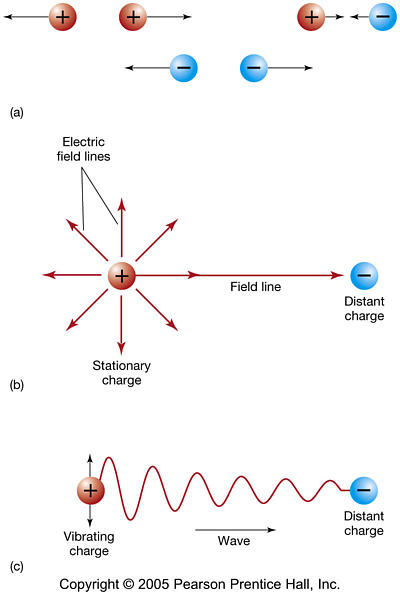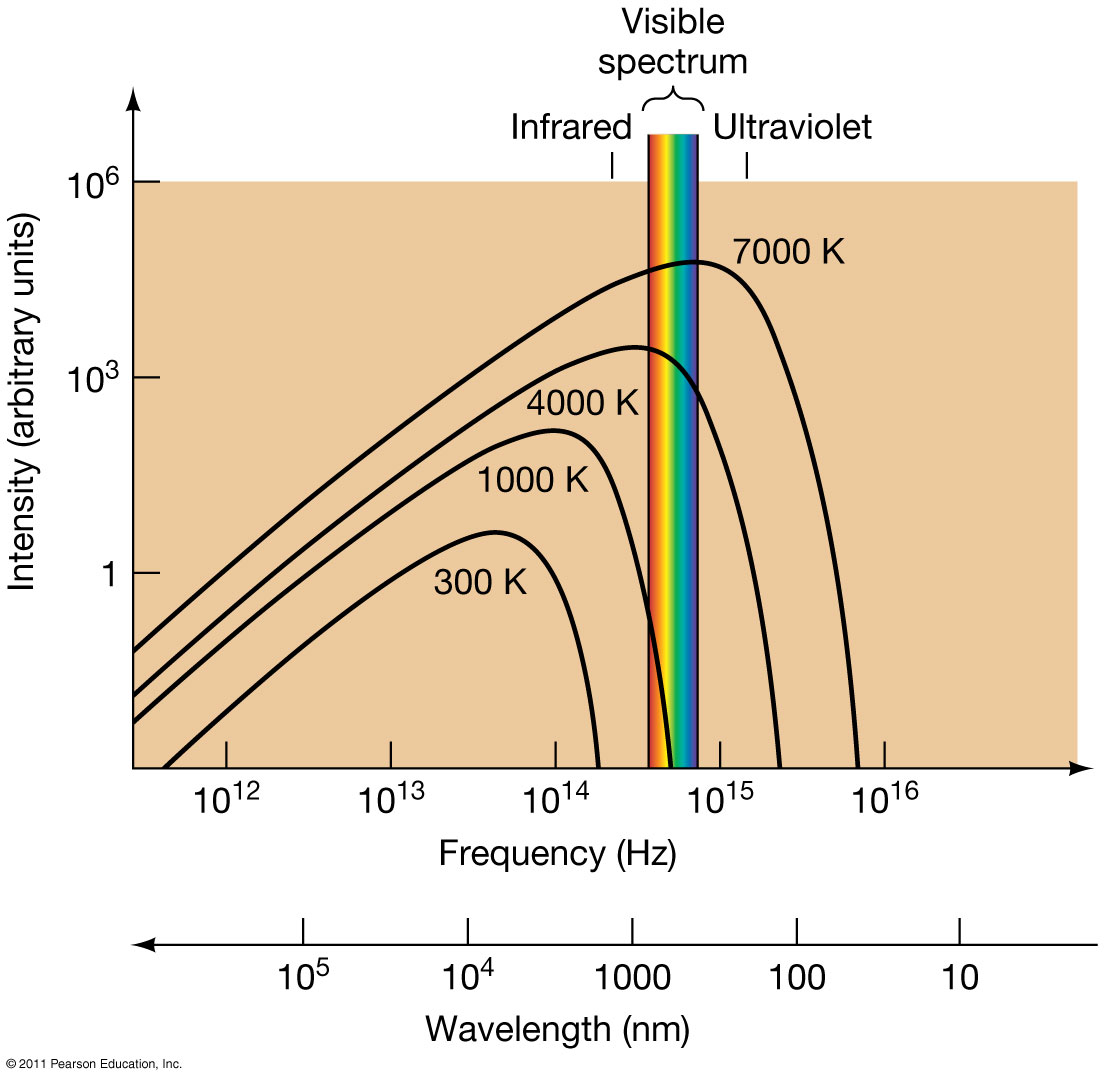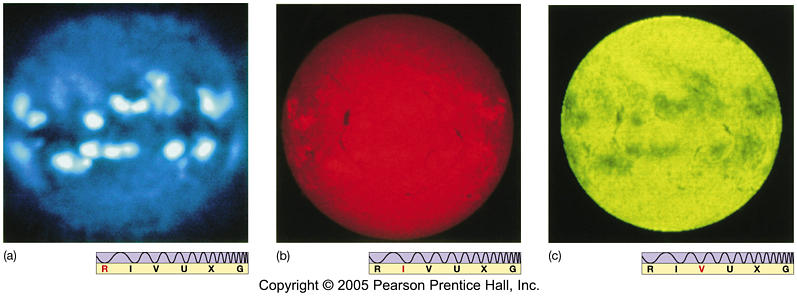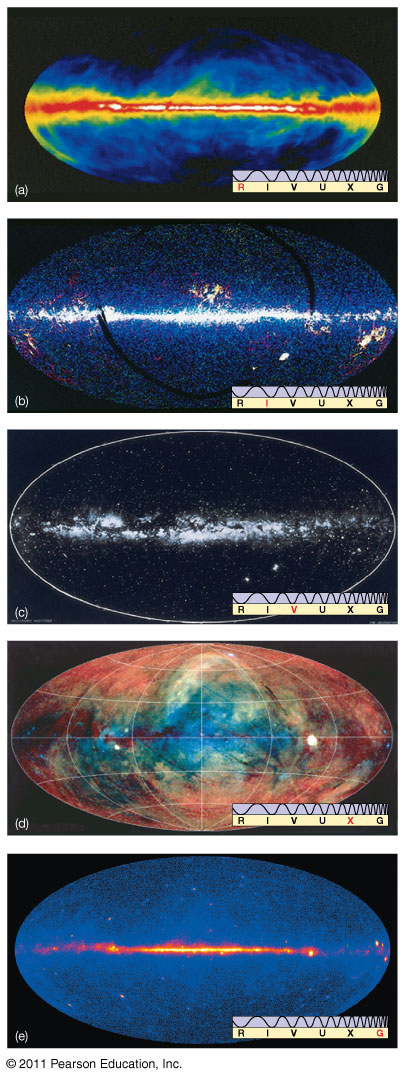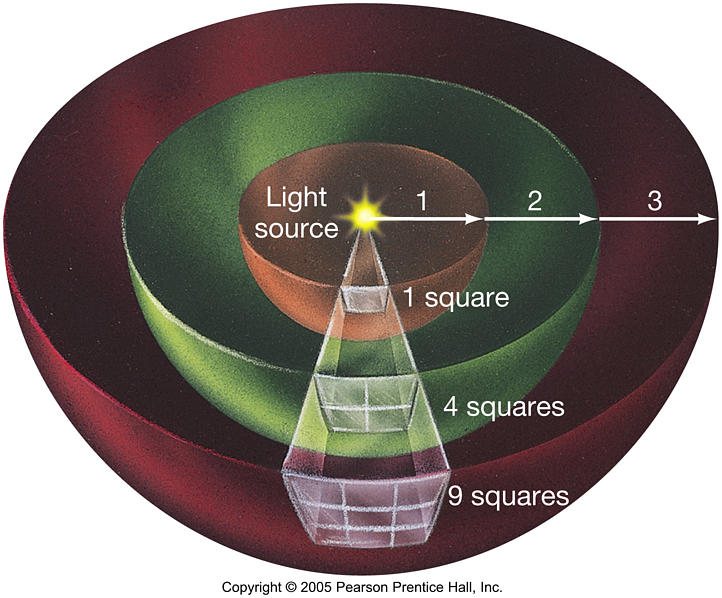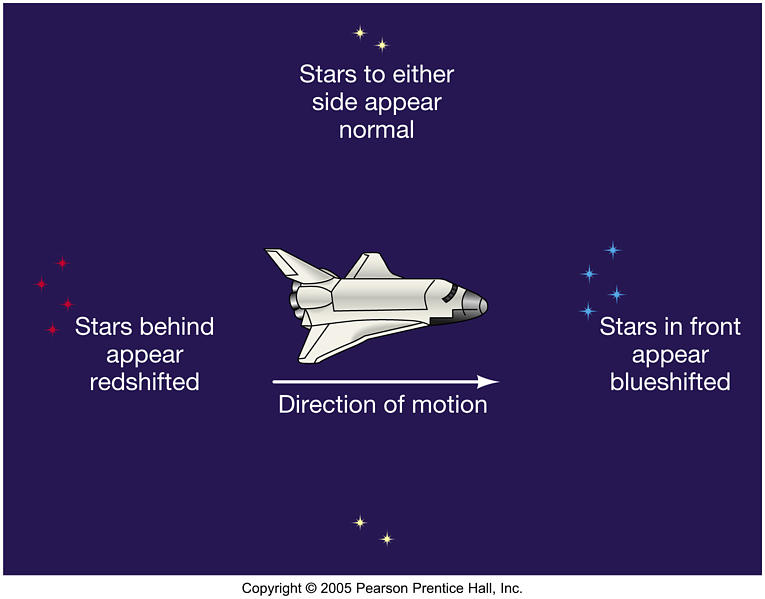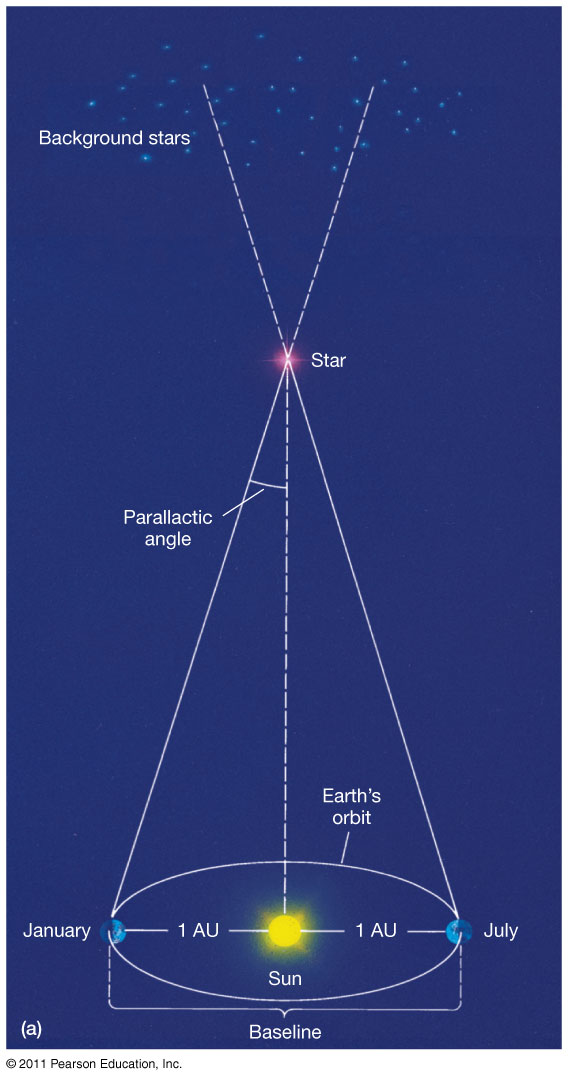Light and Electromagnetic Radiation
|
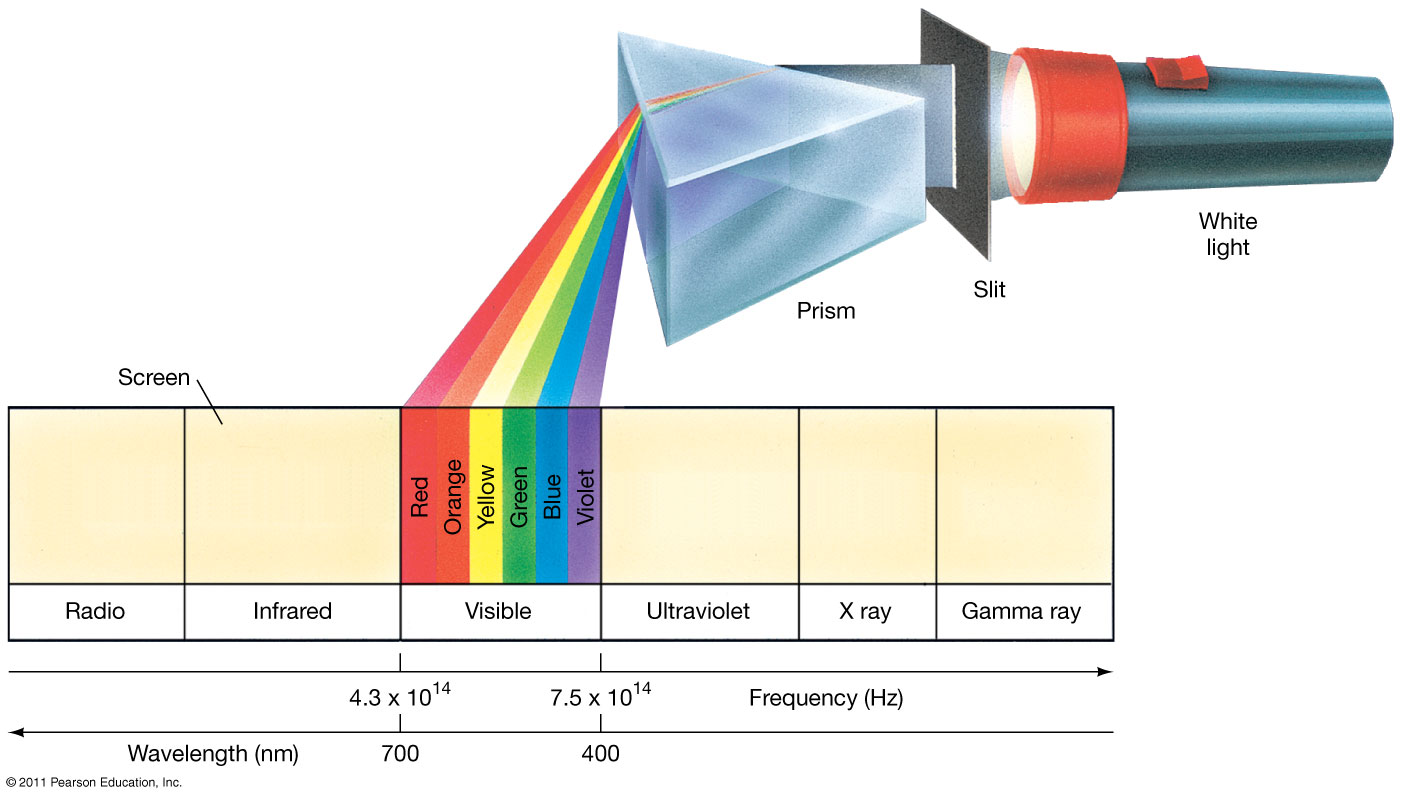
|
| wavelength x frequency = velocity |
|---|
- wavelength is measured in units of length
- meters
- millimeter (mm) = 0.001 m = 10-3 m
- micrometer (μm) = 0.000001 m = 10-6 m
- nanometer (nm) = 0.000000001 m = 10-9 m
- frequency is expressed in units of inverse time (1/sec)
- called Hertz (1 Hz = 1/sec)
- 1 kilometer(km) = 1000 m = 103 m
- 300,000 kilometers/second
| wavelength x frequency = 300,000 km/sec |
|---|
- the "photons" are "particles"
- Einstein was awarded the Nobel Prize for understanding that light (and electromagnetic radiation) is composed of these "particles" ("photons")
- the "photons" have energies related to the "color" or wavelength
- short wavelengths -> higher energies
- like gamma rays
- long wavelengths -> lower energies
- like radio waves
- short wavelengths -> higher energies
- This property is known as "wave-particle duality," a basic element of the quantum theory of physics
- the bending of light in going through the prism results from REFRACTION
- long wavelengths (red) are refracted less than short wavelengths (blue and violet)
- This is referred to as atmospheric "opacity".
